For those of you who wonder what a graphic score might be, at it's most enigmatic, this is perhaps the emblem and icon of graphic score indeterminacy. 193 pages, no instructions. Author: Cornelius Cardew. This score formed the spine of my weekly activities one day a week from some time in September 2018 until just recently. This post is here to tell you about it.
My evolving study of, and work with Cornelius Cardew's graphic score, Treatise, is best thought of as an attempt to "sound" the work, in the double sense of measure the depth, make sound and sense of the thing. Since it's evolved over the last 6 months as a workshop at Kołorking Muzyczny, Poznan, I've decided to present the ideas in the form of a journal, a bit fictive, after the fact, but incidental enough to present ideas and reflections that occur day by day, in layers, over time and without formal conclusions and ever with an ellipsis ...
(for introductory materials please see the links at bottom)
Here is one on my own earliest interpretations of a 20 pages stretch, played on acoustic guitar.
https://soundcloud.com/jeff-gburek/contemplating-20-pages-oct-3
The extremely subversive nature of Cardew's score "Treatise" is such that it transforms the performer into a composer. It even transforms the self-cosvious improvisor into a composer. After contemplating the score long enough before playing and/or keeping the score before me while playing, I experience that my improvisations are more intentional, achieve greater clarity and precision, in short, Treatise has allowed me to access the composed-ness of my improvisations, their unconscious perhaps, the pages became an invisible partner in the work.
"Bear in mind that parts of the score may be devoid of direct musical relevance."
- Cornelius Cardew, Treatise Handbook
Laying all 193 pages of it out on the floor...
one day, October 8 --
10.08.2018, in fact
I walk through the entire range of gestures and eventually find patterns, inversions, mirrors, fun-house palindromes, and other periodic symbols that show me the composition cleverly respects certain traditions of form and-- despite the fact that it seems to want to have consigned all that to the dust-bin of history -- it's not as random a sprawl as one first imagines it to be. That there just might be a mysterious coherence lurking beyond all these seemingly centrifugal trajectories. Like a flow of white lava...
And it creates gently and silently a sense that the freedom it offers also comes with the responsibility for the choices one will make during one's interpretations. This makes it a unique score, and ethical statement, one more stubborn, standing apart more radically, than almost any others, including his own earlier and later works... although I should add here a caveat that I cannot class myself as an Cardew expert, not exactly, and if anything, I am innocent, ignorant, lacking presumptions when I stand before such an enigmatic planet like Treatise. And yet I have entered more deeply into a relationship with time and try to even go further in writing about it here. The score is in fact an extreme challenge to an individual and the society at large since the work depends on introspection and a will to change.
An aspect of Treatise that confounds expectation and transcends most standards for music since music had started to be recorded: there can be no definitive version and even if some people find they prefer, for example the "Cardew Trio's" youtube version (they never specified exactly what pages they played) there's nothing within the score that suggests the "intention" of the composer is being more strictly "obeyed" -- giving a strange twist to Boulez' neutral, objective idea of interpretation "just what the score says," as the Dragnet detective insists, just the facts, maam but the "facts" in Cardew's Treatise are so many traces that lead only back to the person who looks at it carefully) . So, while there are enough literal notes written out in most of Cage's pieces for people to argue about the best placement or accent or dynamic, in Treatise, there's none of this. It's generative of a more absolute difference with identity itself, more firmly following the vector of time and becoming, approaching infinity, radically other. But one has to do something in order to make a difference...
Throughout most of October I will play/create various segments on the piano or guitar and stare at the pages until a revelation comes drifting through the ether or a more urgent desire but I turn the desire back, train the attention on the score and imagine these as brain-waves, absolute waves. People have been coming and going over the weeks. (Their comings and goings are part of the score, I start to imagine). I have heard people ask repeatedly how on earth do we determine the tempo of any reading, so that all players will be at the same point in the timeline. It was in response to this very question that I realized there is no indication that you must read in a linear manner and/or that linearity of reading is dependent of your culture of origin. While most people read western music right to left like they read their novels and news papers, other people go the opposite way or up and down, other people scroll. Why should I not feel free to allow the eye to wander over pages of Treatise as one does a painting or a natural landscape, for example? And interact with the same fidelity of action. An electronic rendering of the piece would only be a recording. The alterity of the score is never undermined. And yet, there is the thing, the score, that resists, that tests what you say about it remaining in the realm of that uncanny silence...
11/21/2018
this week is a special edition in which I will try to talk about why timing is both so important but also irrelevant as determining parameter based on some observations I've made, partly communicated to Fryderyk Szulgit who might never come again
because one does not really need to read left to right
one does not need to treat Treatise as a traditional score leading the performer
by the nose from one sound to another and there is no reason to assume every line has to correspond to an action you play on your instruments (each line is
1) a potential path for another player (collective possibility of enaction) or another sound source (laminal reality, multiple dimensions: a sound as background that you "tune into")
2) a path for you to play when you want to use that energy directing sign
3) up for revisiting if you wish to and as soon as you wish to
Reading Treatise out loud...
I suggest that each page is a form feeling that represents an imagination of a music one must enter into, as if walking into a landscape with one's own sound. I ask people to narrate what they see when looking at several pages. I record their voices as they speak about the score.
Dominika Szelazek observed there was "a walk with two characters represented by two lines" converging then departing, in a squabble, then they entered into something like a castle (zamek, she called it, in Polish) which is also the name of the art museum in the old castle across the street, a kind of art "destination" for some and for some others like Kafka's castle which one never can approach. Well, you can read the score as you like, tell your story in your own sounds, your own words...
I moved to working with the prepared piano. Here's the culminating video of the sequence.
https://youtu.be/V8mnspeDnfE
Only a few moments before, the mood I discovered on electric guitar was radically quieter.
https://youtu.be/lIRvQJ5HADM
11/28/2018
I met someone at the Cardew/Treatise meeting who told me he couldn't understand what he was looking at... and the I remarked that occasionally "Treatise" is like walking in the mountains alone and I followed that through Wittgenstein, of the Tractatus, which Tilbury points to in his own essay about Cardew, but I used the reference to Wittgenstein to say that we walk through the silence of primordial questions we must pass over in silence. (Treatise, the graphic score, only makes sense the way nature makes sense: by fitting together the way it does even when we don't understand it -- by building a relation to the unrelatable, the raw physicality of nature is available to us, the earth even has form of intelligence, just as Treatise. there is a undercurrent of Taoism in Cardew's work and it is perhaps in Treatise the best expressed. Maybe Treatise is a kind of late 20th century Taoist scripture or every performance a mystical Tao scultpure, blown apart like sand? Well, that's a leap. But we feel forms through absences, the memory of forms, transmitted by mediation of the abyss. Every lack of reference is being informed (if one is calm) by all the senses. We see vistas, horizons, convergences, structures, geometries. Even the forest is a gapped space, a scale of scales, fanning out in all directions, will-nilly, in secret underground family connections, every line a potential crossroads in a totemic geography. Our freedom to work in that space depends on our ability to sense, sensually, the forms vacillating between, flickering between states formed even by the way we breathe and think, so we slowly bleed forward through time into the future. Treatise is a bit like walking through an abstract forest or the forest as if it's abstract. They fractalize in frictions against one another, these two states (something/nothing). One relates to Cardew's Treatise in much the same way we all probably do when wandering the woods, with some peace, excitement, calm, some trepidation -- we listen and use all our sensory fields, weave ourselves through "the wildnerness we are" (Marcella Durand). And trying to read and play treatise has been for me a surrogate for the wandering in unknown landscapes, deserts, outbacks, forests, mountains, where each decisions brings me to the next revelation of nature's creation in the vast arc of time. And this also seems to me on par with the liquidity I have been contemplating while building the sound palette for the Zygmunt Bauman memorial composition: a connection weaves together Treatise, fluid mechanics, Heraclitus, Paul Klee and Bauman also -- and you, the reader, following perhaps up to this moment, as I acknowledge with that regard, for you are with me always, even in your absence, as memory, as flesh. My partner in these travels.
There will be more audio upcoming. Follow me on my soundcloud sites:
https://soundcloud.com/jeff-gburek
https://soundcloud.com/automatopoeia
"Bear in mind that parts of the score may be devoid of direct musical relevance."
- Cornelius Cardew, Treatise Handbook
The Young Person's Guide to Treatise
http://www.spiralcage.com/improvMeeting/treatise.html
A very fine essay about Cardew and Treatise
by British pianist John Tilbury
http://www.users.waitrose.com/%7echobbs/tilburycardew.html
Full Treatise Score pdf
https://monoskop.org/File:Cardew_Cornelius_Treatise_1967.pdf
The Hum Blog essay on Treatise
https://blogthehum.wordpress.com/2016/02/29/cornelius-cardews-treatise-1963-67/
My evolving study of, and work with Cornelius Cardew's graphic score, Treatise, is best thought of as an attempt to "sound" the work, in the double sense of measure the depth, make sound and sense of the thing. Since it's evolved over the last 6 months as a workshop at Kołorking Muzyczny, Poznan, I've decided to present the ideas in the form of a journal, a bit fictive, after the fact, but incidental enough to present ideas and reflections that occur day by day, in layers, over time and without formal conclusions and ever with an ellipsis ...
(for introductory materials please see the links at bottom)
Here is one on my own earliest interpretations of a 20 pages stretch, played on acoustic guitar.
https://soundcloud.com/jeff-gburek/contemplating-20-pages-oct-3
The extremely subversive nature of Cardew's score "Treatise" is such that it transforms the performer into a composer. It even transforms the self-cosvious improvisor into a composer. After contemplating the score long enough before playing and/or keeping the score before me while playing, I experience that my improvisations are more intentional, achieve greater clarity and precision, in short, Treatise has allowed me to access the composed-ness of my improvisations, their unconscious perhaps, the pages became an invisible partner in the work.
"Bear in mind that parts of the score may be devoid of direct musical relevance."
- Cornelius Cardew, Treatise Handbook
Laying all 193 pages of it out on the floor...
one day, October 8 --
10.08.2018, in fact
I walk through the entire range of gestures and eventually find patterns, inversions, mirrors, fun-house palindromes, and other periodic symbols that show me the composition cleverly respects certain traditions of form and-- despite the fact that it seems to want to have consigned all that to the dust-bin of history -- it's not as random a sprawl as one first imagines it to be. That there just might be a mysterious coherence lurking beyond all these seemingly centrifugal trajectories. Like a flow of white lava...
And it creates gently and silently a sense that the freedom it offers also comes with the responsibility for the choices one will make during one's interpretations. This makes it a unique score, and ethical statement, one more stubborn, standing apart more radically, than almost any others, including his own earlier and later works... although I should add here a caveat that I cannot class myself as an Cardew expert, not exactly, and if anything, I am innocent, ignorant, lacking presumptions when I stand before such an enigmatic planet like Treatise. And yet I have entered more deeply into a relationship with time and try to even go further in writing about it here. The score is in fact an extreme challenge to an individual and the society at large since the work depends on introspection and a will to change.
An aspect of Treatise that confounds expectation and transcends most standards for music since music had started to be recorded: there can be no definitive version and even if some people find they prefer, for example the "Cardew Trio's" youtube version (they never specified exactly what pages they played) there's nothing within the score that suggests the "intention" of the composer is being more strictly "obeyed" -- giving a strange twist to Boulez' neutral, objective idea of interpretation "just what the score says," as the Dragnet detective insists, just the facts, maam but the "facts" in Cardew's Treatise are so many traces that lead only back to the person who looks at it carefully) . So, while there are enough literal notes written out in most of Cage's pieces for people to argue about the best placement or accent or dynamic, in Treatise, there's none of this. It's generative of a more absolute difference with identity itself, more firmly following the vector of time and becoming, approaching infinity, radically other. But one has to do something in order to make a difference...
Throughout most of October I will play/create various segments on the piano or guitar and stare at the pages until a revelation comes drifting through the ether or a more urgent desire but I turn the desire back, train the attention on the score and imagine these as brain-waves, absolute waves. People have been coming and going over the weeks. (Their comings and goings are part of the score, I start to imagine). I have heard people ask repeatedly how on earth do we determine the tempo of any reading, so that all players will be at the same point in the timeline. It was in response to this very question that I realized there is no indication that you must read in a linear manner and/or that linearity of reading is dependent of your culture of origin. While most people read western music right to left like they read their novels and news papers, other people go the opposite way or up and down, other people scroll. Why should I not feel free to allow the eye to wander over pages of Treatise as one does a painting or a natural landscape, for example? And interact with the same fidelity of action. An electronic rendering of the piece would only be a recording. The alterity of the score is never undermined. And yet, there is the thing, the score, that resists, that tests what you say about it remaining in the realm of that uncanny silence...
11/21/2018
this week is a special edition in which I will try to talk about why timing is both so important but also irrelevant as determining parameter based on some observations I've made, partly communicated to Fryderyk Szulgit who might never come again
because one does not really need to read left to right
one does not need to treat Treatise as a traditional score leading the performer
by the nose from one sound to another and there is no reason to assume every line has to correspond to an action you play on your instruments (each line is
1) a potential path for another player (collective possibility of enaction) or another sound source (laminal reality, multiple dimensions: a sound as background that you "tune into")
2) a path for you to play when you want to use that energy directing sign
3) up for revisiting if you wish to and as soon as you wish to
I suggest that each page is a form feeling that represents an imagination of a music one must enter into, as if walking into a landscape with one's own sound. I ask people to narrate what they see when looking at several pages. I record their voices as they speak about the score.
Dominika Szelazek observed there was "a walk with two characters represented by two lines" converging then departing, in a squabble, then they entered into something like a castle (zamek, she called it, in Polish) which is also the name of the art museum in the old castle across the street, a kind of art "destination" for some and for some others like Kafka's castle which one never can approach. Well, you can read the score as you like, tell your story in your own sounds, your own words...
I moved to working with the prepared piano. Here's the culminating video of the sequence.
https://youtu.be/V8mnspeDnfE
Only a few moments before, the mood I discovered on electric guitar was radically quieter.
https://youtu.be/lIRvQJ5HADM
11/28/2018
I met someone at the Cardew/Treatise meeting who told me he couldn't understand what he was looking at... and the I remarked that occasionally "Treatise" is like walking in the mountains alone and I followed that through Wittgenstein, of the Tractatus, which Tilbury points to in his own essay about Cardew, but I used the reference to Wittgenstein to say that we walk through the silence of primordial questions we must pass over in silence. (Treatise, the graphic score, only makes sense the way nature makes sense: by fitting together the way it does even when we don't understand it -- by building a relation to the unrelatable, the raw physicality of nature is available to us, the earth even has form of intelligence, just as Treatise. there is a undercurrent of Taoism in Cardew's work and it is perhaps in Treatise the best expressed. Maybe Treatise is a kind of late 20th century Taoist scripture or every performance a mystical Tao scultpure, blown apart like sand? Well, that's a leap. But we feel forms through absences, the memory of forms, transmitted by mediation of the abyss. Every lack of reference is being informed (if one is calm) by all the senses. We see vistas, horizons, convergences, structures, geometries. Even the forest is a gapped space, a scale of scales, fanning out in all directions, will-nilly, in secret underground family connections, every line a potential crossroads in a totemic geography. Our freedom to work in that space depends on our ability to sense, sensually, the forms vacillating between, flickering between states formed even by the way we breathe and think, so we slowly bleed forward through time into the future. Treatise is a bit like walking through an abstract forest or the forest as if it's abstract. They fractalize in frictions against one another, these two states (something/nothing). One relates to Cardew's Treatise in much the same way we all probably do when wandering the woods, with some peace, excitement, calm, some trepidation -- we listen and use all our sensory fields, weave ourselves through "the wildnerness we are" (Marcella Durand). And trying to read and play treatise has been for me a surrogate for the wandering in unknown landscapes, deserts, outbacks, forests, mountains, where each decisions brings me to the next revelation of nature's creation in the vast arc of time. And this also seems to me on par with the liquidity I have been contemplating while building the sound palette for the Zygmunt Bauman memorial composition: a connection weaves together Treatise, fluid mechanics, Heraclitus, Paul Klee and Bauman also -- and you, the reader, following perhaps up to this moment, as I acknowledge with that regard, for you are with me always, even in your absence, as memory, as flesh. My partner in these travels.
There will be more audio upcoming. Follow me on my soundcloud sites:
https://soundcloud.com/jeff-gburek
https://soundcloud.com/automatopoeia
"Bear in mind that parts of the score may be devoid of direct musical relevance."
- Cornelius Cardew, Treatise Handbook
The Young Person's Guide to Treatise
http://www.spiralcage.com/improvMeeting/treatise.html
A very fine essay about Cardew and Treatise
by British pianist John Tilbury
Full Treatise Score pdf
https://monoskop.org/File:Cardew_Cornelius_Treatise_1967.pdf
The Hum Blog essay on Treatise
https://blogthehum.wordpress.com/2016/02/29/cornelius-cardews-treatise-1963-67/





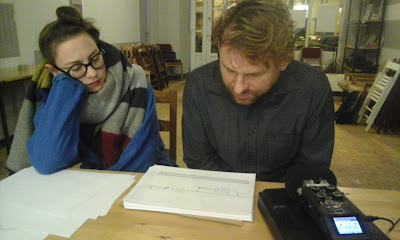

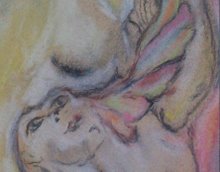



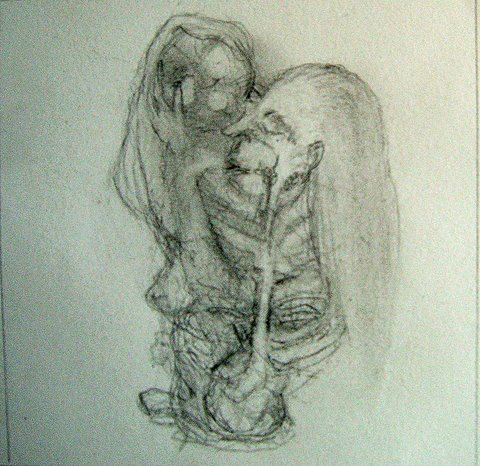
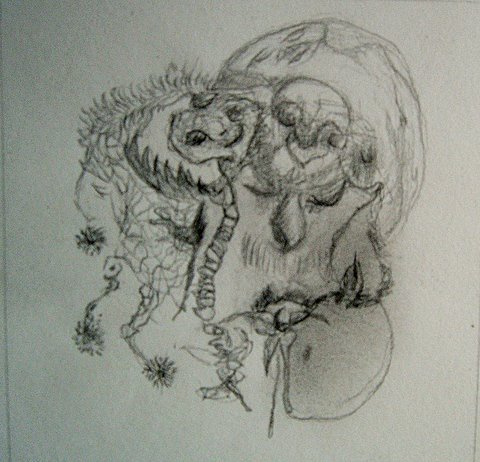
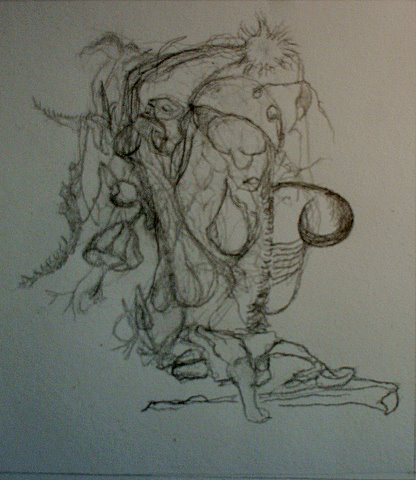
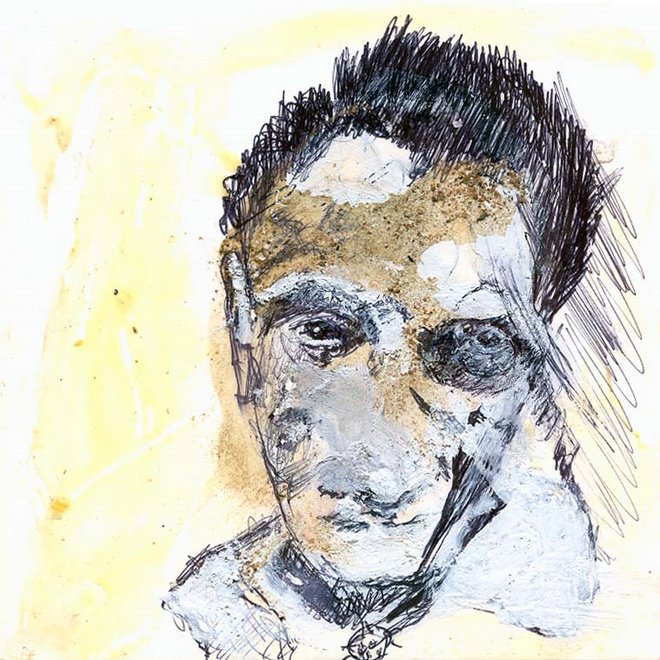
No comments:
Post a Comment